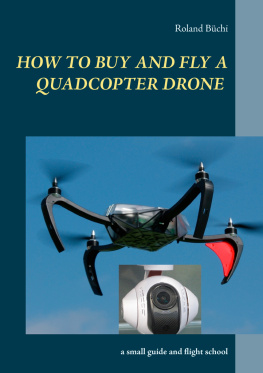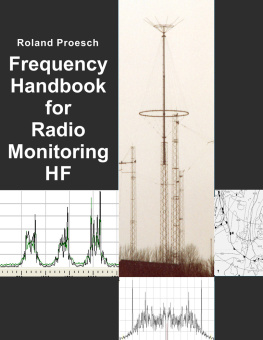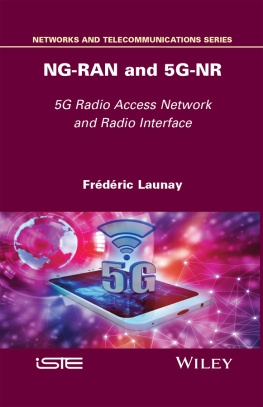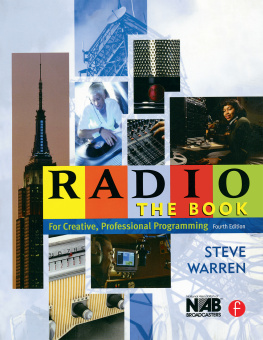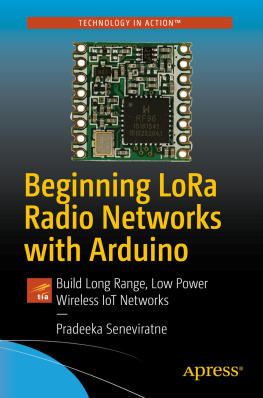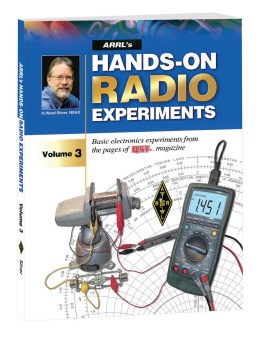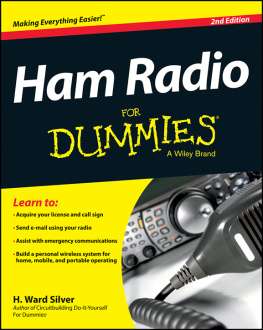Die Deutsche Nationalbibliothek verzeichnet diese Publikation in der Deutschen Nationalbibliografie; detaillierte bibliografische Daten sind im Internet ber dnb.d-nb.de abrufbar.
Impressum:
Roland Bchi, 2014
Herstellung und Verlag: BoD - Books on Demand GmbH, Norderstedt
ISBN: 978-3-73220-428-1
German edition:
'2.4-GHz-Fernsteuerungen, publisher: vth, Verlag fr Technik und Handwerk neue Medien GmbH
Preamble
In the first years of the new millennium, in the development of radio control technology with 2.4 GHz, a real revolution has taken place. While the frequencies in the MHz range were standard over many years, a large proportion of modern communication technology and with it radio control (RC) has since taken the band between 2.4 GHz and 2.48 GHz. This development was possible not least due to faster transistors and todays microprocessor technology. The biggest advantage for the user is that he no longer needs to coordinate with others if he wants to switch on his radio control. All transmitters transmit on the same frequency band, and the receivers know through a sophisticated technology which signals are dedicated for them.
Model construction has been equipped with RC for over fifty years. Without it, this fascinating hobby would probably never have inspired generations of people. Without RC, especially the airplane, helicopter, car, and ship models would not have achieved such popularity. And this book is aimed primarily at the users of these types of models.
Of course there were many developments, especially with RC on the MHz frequency bands, which led to the technology used now. Since today almost exclusively 2.4 GHz RCs are sold, this technology is concentrated on in this book.
The components of a modern radio control, such as the transmitter, receiver, servos, and other peripherals, are discussed in a separate chapter. It is also shown here how the various units can be combined into a complete and functioning system.
This leads immediately to the range and its properties. On its own, this is not yet meaningful, because different factors such as obstacles, reflections, or the movement of the model itself can interfere with the safe transmission at 2.4 GHz. In addition, different antenna types with different characteristics are used. Their optimal alignment is also discussed on the basis of many examples. Many 2.4 GHz RCs operate with diversity, i.e. with multiple antennas. It is also specifically discussed here how the antenna orientations can be optimized in this mode. Of course some comparisons with the signal transmission in the MHz range are always made.
There is also a chapter on the modulation and transmission types. In many data sheets of modern RC terms such as PPM, PCM, ASK, FSK, PSK, FHSS, FASST, DMSS, or DSSS are found. The book is designed to help so that by the end the reader can classify and understand these properly and knows their most important characteristics.
The user interfaces of todays RC are mostly two sticks. Each of them can be moved in all four directions. The stick allocations to the functions are clearly defined in the various models. However, there are several allocation modes. These are discussed, and a look into the future will also be made, with new concepts of user interfaces which may be capable of replacing the sticks. Rotary encoders, switches, and buttons are also discussed.
The data transmission is possible in both directions with the 2.4 GHz technology. This means that the receiver in the model can also operate as a transmitter and can transmit important telemetry data from the model during operation. In doing so, the transmitter functions briefly as the receiver and may optionally display battery voltages, engine temperature, or currents of the model. An overview of the available systems is given.
At the end of the book are some practical tips on installing the system into the model, and for the interference suppression of components.
Contents
1. Introduction
The development of technical model construction has always been very closely linked with the development of radio controls. With actual cars, airplanes, or boats, the driver, pilot, or captain sits inside. He controls them directly via sticks, steering wheels, brakes, accelerator pedals, throttles, etc. Since models in contrast are unmanned, they must be controlled from the outside. Since the radio control represents the only method of intervention to the models in use, it has become the most important aspect. Contemporary models of all types are getting larger and larger, and ever more powerful motors are being installed. The largest models sometimes cost as much as a midsize car. Their weight and speed also represent a significant safety risk. Only the reliability and capabilities of modern radio control systems allow safe maneuvers on land, at sea, and in the air.
Figure 1: Radio control system with all necessary components
Today, at the beginning of the 21st century, almost all commonly used RCs are based on 2.4 GHz technology. This is actually only a logical development of all previous transmission types. It is even so that the origin of many features of modern RC is several decades old.
1.1 Origins of wireless transmission
The birth of wireless transmission was approximately in 1864. At that time, James Clerk Maxwell predicted the existence of electromagnetic waves in theory. In 1886 the physicist Heinrich Hertz was able to prove this with measurements. Guglielmo Marconi could use them practically in 1901. He was able to send and receive wireless Morse code across the Atlantic Ocean. Electromagnetic waves can propagate at the speed of light in vacuum and in the air. They can transport energy and also information from a transmitter to a receiver unit, without any wires.
First points of contact to model construction
As with many other technologies, model construction was one of the first applications here. Nikola Tesla, the genius in electrical engineering, made many inventions in various fields. At the world exhibition in New York in 1898, he presented a radio-controlled model boat. That was probably the birth of the RC in model construction. But another 50 years passed before RC became more common. The first transmitters, which sent in the MHz range, were sold in the 1950s.
1.2 From the MHz to GHz transmission
The range of MHz transmitters is in the order of several hundred meters to a few kilometers. It depends on the permitted transmission power. If two transmitters want to transmit their signals within the same area using the same frequency range, then the receiver cant distinguish where the detected signal originates from. The received signals are then an overlapping of the two transmitter signals and it is not able to detect the proper signal.
The regulatory authorities therefore had to legislate for the use of frequencies. RC in model construction thus received its own frequencies in the MHz range. They are the only users of these.
The path to GHz radio controls
For many years from the 1960s to the 2000s, frequency panels dominated in model construction events. Before the model pilot or captain could switch on his radio control, he first had to mark his channel on the panel so that no one else would use it. Any other pilots with the same channel could not switch on their radio control during this time, not even for testing purposes. Here, the discipline of everybody was vital. Often transmitters were still switched on unintentionally. This was usually very bad, especially in model flight. More than a few models were brought rather rudely from the sky in this way.


